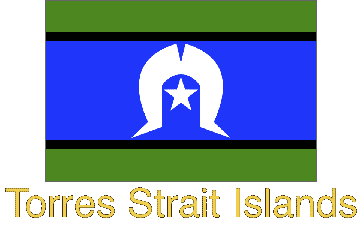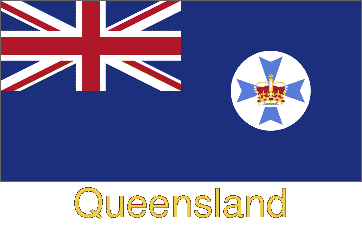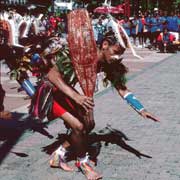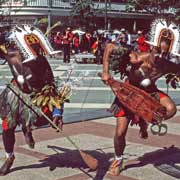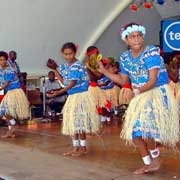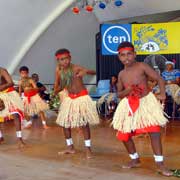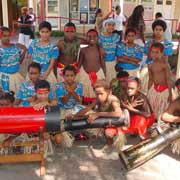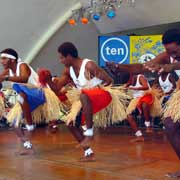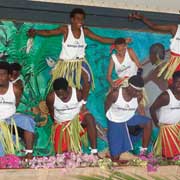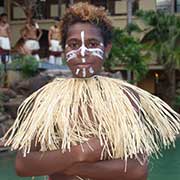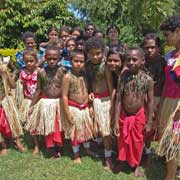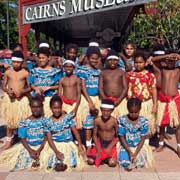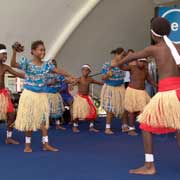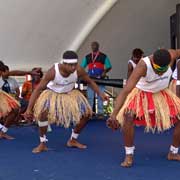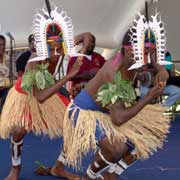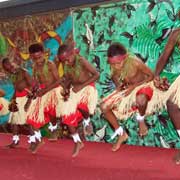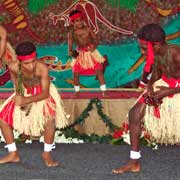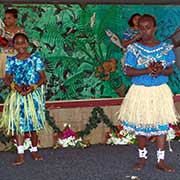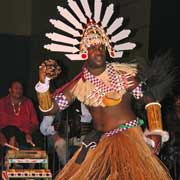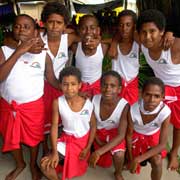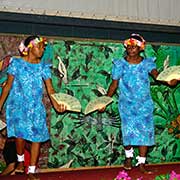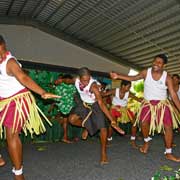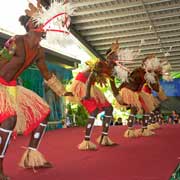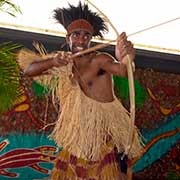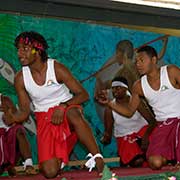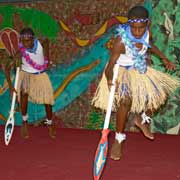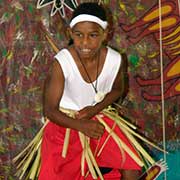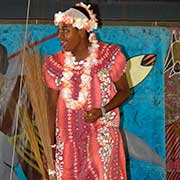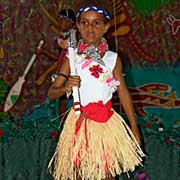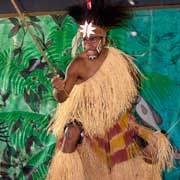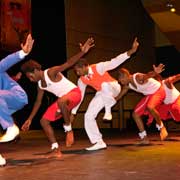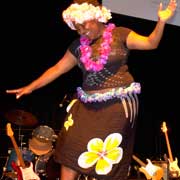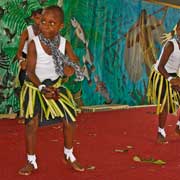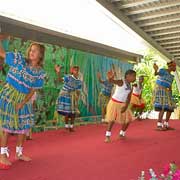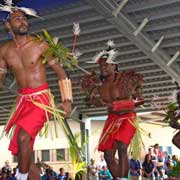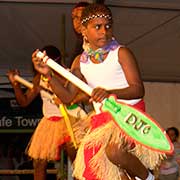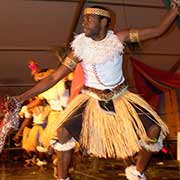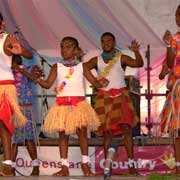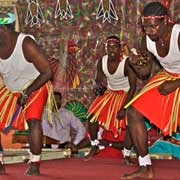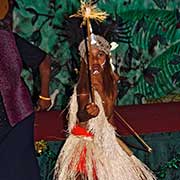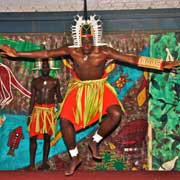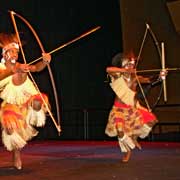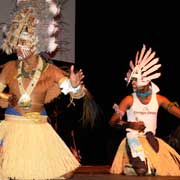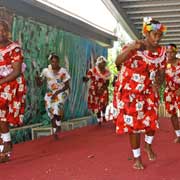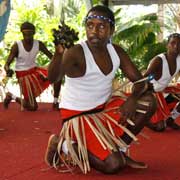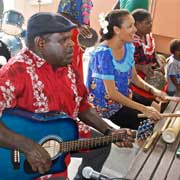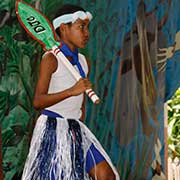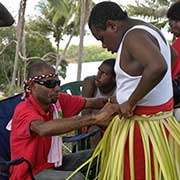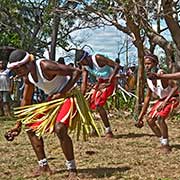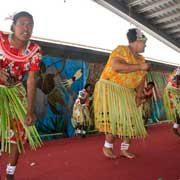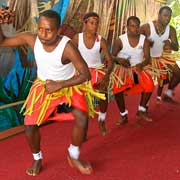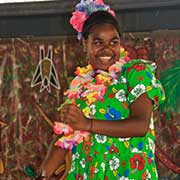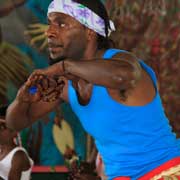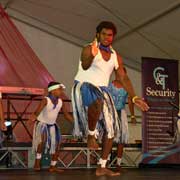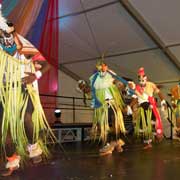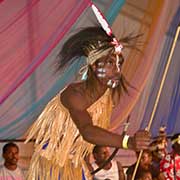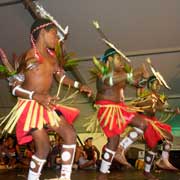Photos of Djarragun College Torres Strait Islander dancers, Australia
Djarragun College Torres Strait Islander dancers
Djarragun College, a school for indigenous students in Cairns, North Queensland, was established in 2001. It took a little over a year for a group of senior boys, from Murray Island, to form the "Djarragun Dancers" with the help of their family members living in Cairns. Although Torres Strait Islander life had changed with the arrival of the missionaries in the second half of the 19th century, and their music and singing had obviously been influenced by English and Polynesian forms, it had retained a distinctly Torres Strait Islander style. The boys practiced the "stand-up dances", with its vigorous movements and footwork; accompanied by harmonious singing in their native Meriam Mir language and the beating of the Papua New Guinea-style drums, covered with lizard skin and tuned with blobs of beeswax. This proved very popular and their first big performance was at the Presentation of Awards ceremonies of Djarragun College, held on the big stage of Trinity Anglican College. The crowd clapped and cheered wildly and girls moved among the dancers, sprinkling them with white baby powder to show appreciation and encouragement.
you may then send it as a postcard if you wish.
The boys practiced the "stand-up dances", with its vigorous movements and footwork; accompanied by harmonious singing in their native Meriam Mir language and beating of the Papua New Guinea-style drums, covered with lizard skin and tuned with blobs of beeswax. This proved very popular and their first big performance was at the Presentation of Awards ceremonies of Djarragun College, held on the big stage of Trinity Anglican College. The crowd clapped and cheered wildly and girls moved among the dancers, sprinkling them with white baby powder to show appreciation and encouragement.
During the Christmas holidays at home on Murray Island, they performed there to their impressed elders, and then brought back with them the "dhari", headdresses with white cockatoo feathers, worn at the more traditional "Kab Kar", in which men and boys in groups of two, three or more dance behind each other, individually, but in set patterns, accompanied by drums and chanting. The boys' group was soon joined by girls, doing their own dances, wearing the long dresses that are popular in the islands. And then a junior Torres Strait Islands dance group was formed that, with their enthusiasm and exuberance was an immediate hit with the crowds for which they performed, at functions like the yearly Cairns Schools Cultural Festival.
The Djarragun Dancers initially were mainly students from Murray Island and it took a few years until boys from Saibai Island, in the Top Western group just south of Papua New Guinea, provided a quite different style, with individual dancers doing intricate dances, often rapidly shaking their head with their large headdresses, accompanied by singing in their Kalaw Kawaw Ya language; another very popular dance was the rapid "Silent Dance" by a small group of boys, with elaborate costumes, accompanied by just drumming. Then the dances of Boigu Island, west of Saibai, also just across from the Papua New Guinea coast were added: the "Paddle Dance", in which boys dance with canoe paddles, accompanied by singing, drumming and the strumming of a guitar that is actually only used to provide rhythm. And the impressive "Maumatang" War Dance, boys dancing with bows and arrows.
Students from other island groups then also performed their dances, from Yam Island in the Central Islands and Mabuiag in the Western Torres Strait. And during the many celebrations at the school students, who graduated years ago, often came back and again joined in as if they never left. And the younger generation eagerly participated, also in the more difficult dances like the "Kab Kar" from Mer and the "Maumatang" from Boigu. Torres Strait Islander culture was very much alive at the school, during the decade when it was the top indigenous school under its founding principal.
